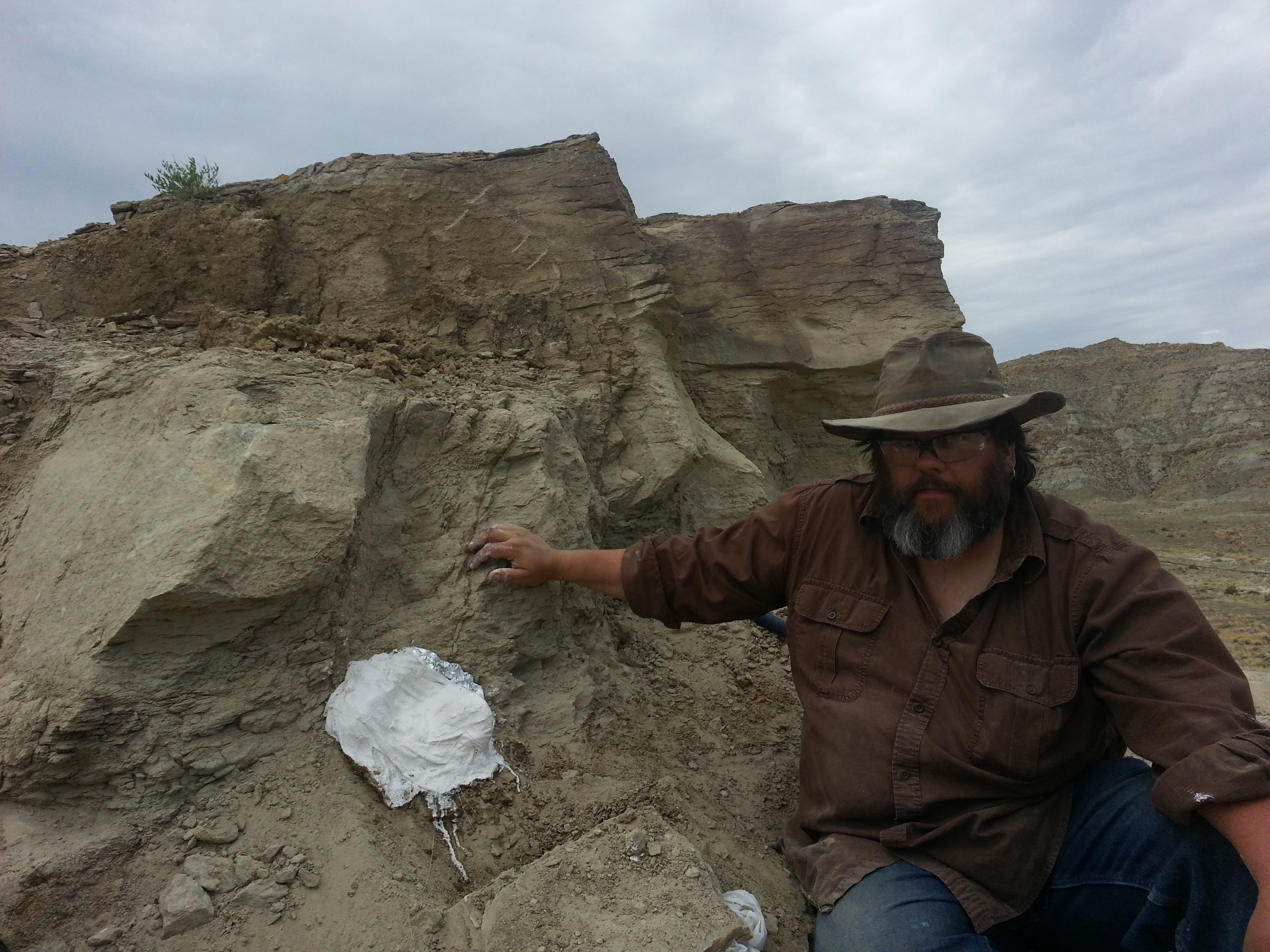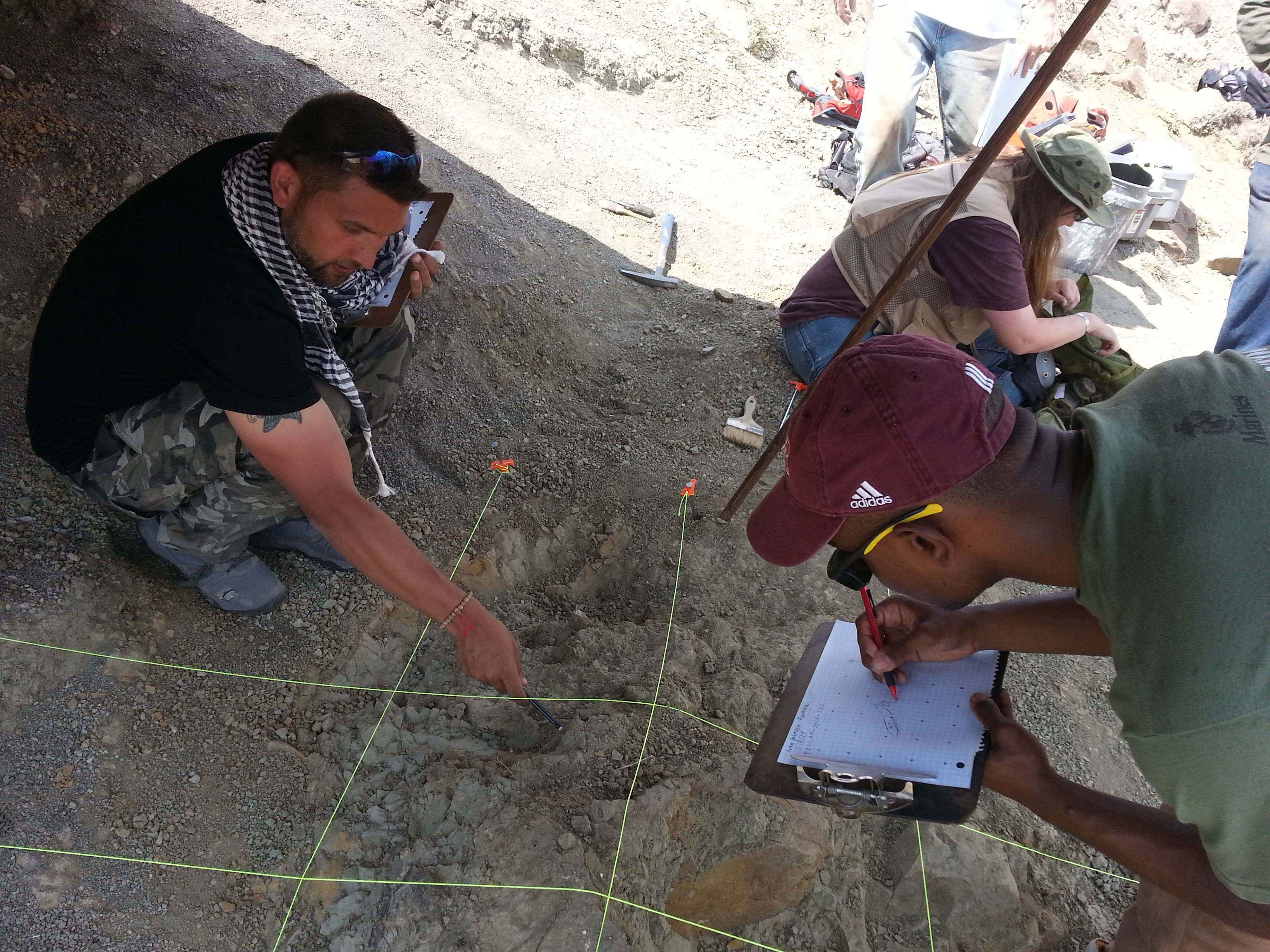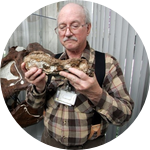Project Results
This was an exciting and extremely successful field season. The T. rex remains disappeared almost immediately after the excavation began, but the Edmontosaur and Triceratops remains turned out to be even better than expected. In fact, the Triceratops remains are important because they are from a juvenile individual. Both specimens are still being prepared in the lab, partly because the rock surrounding these bones is incredibly hard - we could have never excavated them without the jack hammer, generator, and demolition hammer we purchased with the funds raised on our Experiment campaign! In the meantime, the bones have been viewed by tens of thousands of people visiting the Academy of Natural Sciences and the New Jersey State Museum, starting countless wonderful conversations with visitors, and capturing many more imaginations.
About This Project
In 2014, in a remote and barren corner of the Bighorn Basin, NJSM paleontologists and participants in the annual Paleontology Field School made a remarkable discovery. We found at least three partial dinosaur skeletons, including the world's most famous predator - Tyrannosaurus rex. With YOUR support, our team will return in 2015 to excavate the skeletons and bring them back to our research labs for preparation, study, education, and exhibition.
Ask the Scientists
Join The DiscussionWhat is the context of this research?
The ecosystem that existed in the northern Great Plains during the Late Cretaceous has been studied extensively in the famous Hell Creek Formation, but much less so in the nearby Lance Formation. The NJSM's expeditions in the region represent a decades-long research project dedicated to documenting this ancient ecosystem, which in turn helps us to understand the ecosystems that existed in eastern North America at the same time.
The 2014 discovery of a multi-individual bonebed is unprecedented in the history of the research project. Dinosaurs are important and fascinating pieces of the ecological puzzle, and these specimens will yield a wealth of information on the creatures themselves, their world in general, and on the mass extinction that wiped out most of Earth's species shortly after.
What is the significance of this project?
Excavating these dinosaur skeletons will provide us a treasure trove of information about the individual animals themselves - how they lived, and how they died. They'll also tell us about their species in general and their relationships to other species, including those in eastern North America. All of this information will give us better insight into the region's ecosystem at the end of the Cretaceous Period, which may in turn help us to better understand the end-Cretaceous mass extinction.
Even after our studies are complete, these specimens will help us engage countless visitors on paleontology, paleoecology, and many other science topics, for generations to come. We can only guess how many generations of students to come will marvel at and be inspired by these specimens.
What are the goals of the project?
Our goal is to fully excavate the three dinosaur skeletons and to safely transport them to our research labs at the New Jersey State Museum and the Academy of Natural Sciences of Drexel University. Both of these labs are “open" to the public, to the extent that visitors can see and interact with researchers and volunteers preparing and studying the specimens. Hundreds of thousands of visitors to both institutions will be able to do just that as our scientists and students conserve, prepare, and study the specimens.
Once preparation is complete, the skeletons will be available for exhibition and study by researchers around the world in perpetuity. The specimens and the expedition will be incorporated into educational programming as well.
Budget
Participants in the NJSM's field school pay an expedition fee, which covers room and board, on-sight transportation, a field guidebook, tools and equipment for minor excavations, and in-depth, personal, hands-on instruction to what many participants have described as a “life changing experience." However, the complexity and scale of the 2015 excavation will be far more costly than a typical excavation, so contributed support is required.
Contributed funds will be dedicated entirely to the costs associated with the excavation and transportation of these newly unearthed specimens. To complete this mission, access paths must be repaired, ATV's will carry fossil jackets from the quarry to trucks, and a moving van will transport the fossils to research laboratories on the East coast for study. Large quantities of jacketing supplies are also needed- namely, plaster of paris and burlap. Funds raised in excess of the goal will be used for laboratory supplies for preparing the specimens.
Donations will be processed by Silicon Valley Community Foundation, a 501(c)(3) public charity registered in the state of California. Your gift is tax-deductible to the fullest extent of the law.
Meet the Team
Affiliates
Team Bio
Jason Schein (pictured top left) is a paleontologist and has served as an adjunct professor of geology. He has extensive field experience in the eastern and southeasterm U.S., Patagonia (Argentina), and has been leading the NJSM's paleontology expeditions in the Bighorn Basin since 2010.
David Parris (pictured top right) is a paleontologist with over 50 years of experience. He has been conducting research in the Bighorn Basin since the 1960's, and is an expert in numerous fields, including Paleocene and Cretaceous mammals, Pleistocene megafauna, and paleopathology.
Jason Poole (pictured bottom left) is a renowned paleoartist and has many years of experience preparing and conserving fossils from all over the world, including some of the largest terrestrial animals ever known.
Jason P Schein
Very simply, I want to do nothing more than surround myself with nature and learn everything I can about it in the short time I have on this planet. I am a natural historian at heart.
I studied geology at Auburn University and paleontology at Drexel University. My publications range a variety of subjects from giant sea turtles to the end-Cretaceous mass extinction. I am most fascinated by the Late Cretaceous marine and terrestrial ecosystems in North America because it allows me to combine my loves of paleontology, nature, the outdoors, and the history and grandeur of the great American West.
I've participated or led expeditions in Argentina and across the United States. As the Founding Executive Director of the Elevation Science Institute, I now lead annual summer expeditions in the Bighorn Basin in Montana and Wyoming. The BBPI is a nonprofit 501(c)(3) organization dedicated to paleontology and earth science research, education, and outreach.
Suburban Philadelphia, Pennsylvania is where I call home. I fill my "free" time by hunting, fishing, writing, and learning. I love sharing my love and knowledge of the natural world with my family and being a Dad.
Visit ElevationScience.org to learn more about our organization. You can also follow us on Facebook and Instagram.
Additional Information
Don't forget - your donation is 100% tax deductible!
Members of the 2013 Field Crew finding "float," or eroded fossil bone on the ground surface, and hoping it will lead to more bone in the ground.
The best remains are often preserved in very dense iron-rich concretions. Sometimes that means bringing out the big guns - here Joe Camburn is removing excess rock with a rock saw.
Some of the 2014 Field Crew excavating the fossilized remains of a Pachycephalosaurus.
Jason Poole sitting beside a fresh top jacket protecting the exposed portion of a T. rex femur discovered in 2014. This is one of the skeletons we need your help to excavate in 2015.
David Parris and Jason Poole, discussing how best to excavate remains of an ankylosaur, or armored dinosaur, in 2013.
Some of the 2013 Field Crew hauling the fossilized remains of a 67 million year old turtle a long way back to the truck.
Suraj and Evan, mapping a Pachycephalosaurus quarry in 2014. 
Members of the 2014 Field Team, including the discoverer and namesake of Johnsonops Hill, on the left.
Volunteers preparing fossils in the NJSM's Paleontology Laboratory.
Project Backers
- 62Backers
- 113%Funded
- $6,775Total Donations
- $109.27Average Donation







